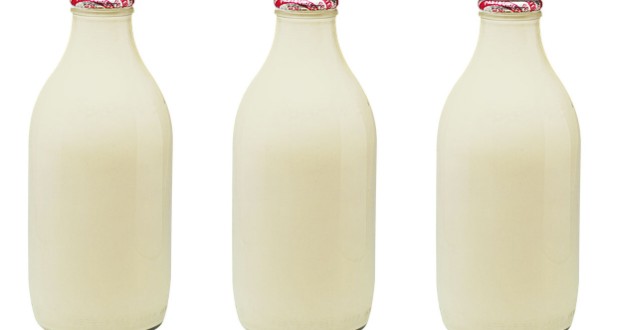Before pasteurisation, most milk was produced locally and drunk quickly. It would spoil rapidly so storage wasn’t an option. Households would collect it in jugs or cans from local farms or dairies and use it that day. However, with the introduction of heat treatment, milk became a more durable commodity, opening up the possibility of new packaging options.
The first glass milk bottles started appearing in 1880s in the UK and, enabling milkmen to deliver a pre-measured pint of milk to households. The clear glass bottles also gave customers a perfect view of the condition their milk was in, demonstrating the improving hygiene standards in the industry.
Initially sealed with cardboard, the bottles were later topped with foil tops. Early bottles often had the name of the dairy embossed or painted on the bottle to encourage it to be returned to its rightful place for cleaning and reuse. This is one of the earliest examples of recycling in packaging. With British households kicking off the day with cups of tea and milky cereals or porridge, morning delivery became the norm and companies such as Unigate and Dairy Crest developed national networks to deliver milk in time for breakfast.
By 1975, 94% of milk was bottled, compared with only about four per cent by 2012. Forty million bottles are day were delivered to doorsteps in the early 1990s, with Unigate squat ‘dumpy’ bottle the most commonplace. The milk bottle even became a media choice in the Eighties with colour printing on bottles, and on the foil tops, being taken up by brands such as Kellogg’s, Cadbury and Brooke Bond.
However deregulation of the milk market in 1994 allowed supermarkets to start selling milk in larger volume containers, and as a loss leader. Milk bottles were heavier than plastic alternatives, making them more expensive to transport. With most people having fridges, milk no longer has to be delivered on a daily basis, so both milk deliveries and bottling went into decline.
Milk that is sold to the door still comes in glass bottles that hold an imperial pint (568ml), as a reminder of its past. However with Dairy Crest announcing the closure of its last glass bottling plant last year, the clink of the pint on the doorstep is largely a thing of the past.
 Packaging News
Packaging News

